Search
Search Results
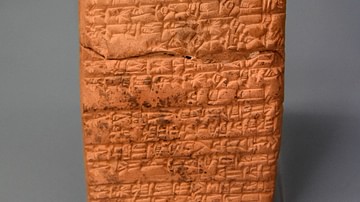
Image
Year Formulae of King Shulgi of Ur
Terracotta tablet listing the year formulae of King Shulgi of Ur. From Southern Mesopotamia, modern-day Iraq, Ur III period, 2094-2047 BCE.
Ancient Orient Museum, Istanbul.

Image
Four Khanates of the Mongol Empire
A map of the four Khanates of the Mongol Empire, after its division in 1259 CE.
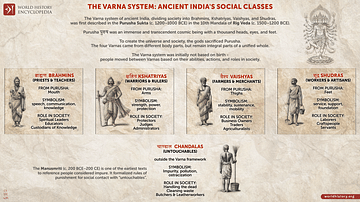
Image
The Four Castes of Ancient India - The Varna System
This infographic illustrates the Varna caste system in ancient India. First mentioned in the Rig Veda's Purusha Sukta c. 1200–1000 BCE, it shows society divided into four groups that emerged from the sacrifice of Purusha, a transcendent and...

Image
Four Monks by Rinaldi
A painting of four monks by Claudio Rinaldi (1852-1909 CE). (Dorotheum, Munich)

Image
Map of the Four Voyages of Christopher Columbus, 1492 - 1504
This map illustrates the four voyages of Christopher Columbus between 1492 and 1504, commissioned by Queen Isabella I of Castile (reign 1474–1504) and King Ferdinand II of Aragon (reign 1479–1516). Overlaid on the prevailing winds and currents...
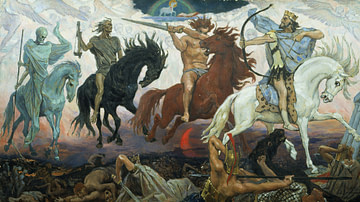
Image
Four Horsemen of the Apocalypse
Four Horsemen of the Apocalypse, oil on canvas painting by Viktor Vasnetsov, 1887.
Glinka National Museum Consortium of Musical Culture, Moscow.
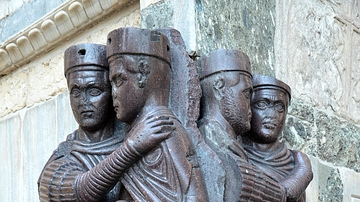
Image
Portrait of the Four Tetrarchs
Porphyry sculpture portraying the four Tetrarchs (Diocletian, Maximianus, Galerius and Constantius Chlorus) embracing. It is dated to c. 300 CE and was sculpted in Asia Minor. It probably originally decorated two separate pillars in Constantinople...
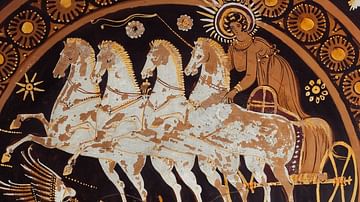
Image
Eos in Her Four-horse Chariot
Eos in her four-horse chariot, detail of terracotta red-figure lekanis vase attributed to the Stuttgart group, from Canosa, late 300s BCE.
Metropolitan Museum of Art, New York.

Image
Four Greek Philosophers
Marble portrait heads of four Greek philosophers (Socrates, Antisthenes of Athens, Chrysippus, and Epicurus), Roman copies after Hellenistic originals.
The British Museum, London.

Image
The Four Elements
The Four Elements. Painting by Mana Lesman. Used with the permission of the artist.